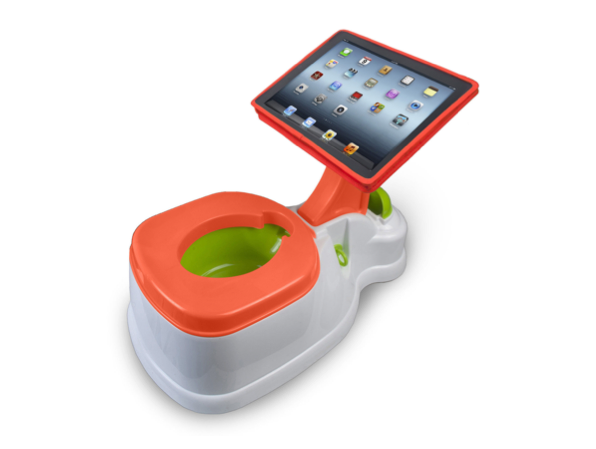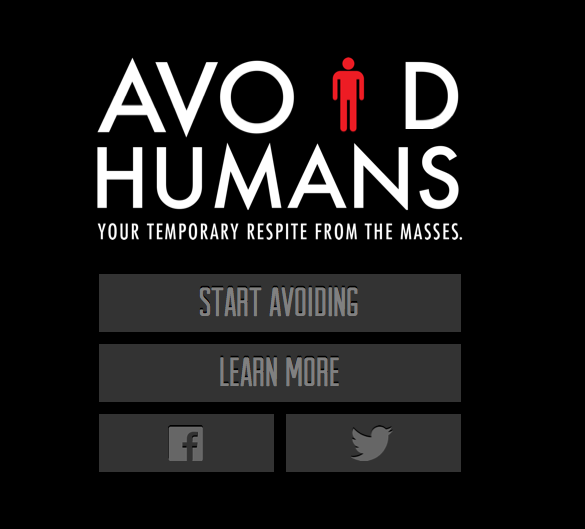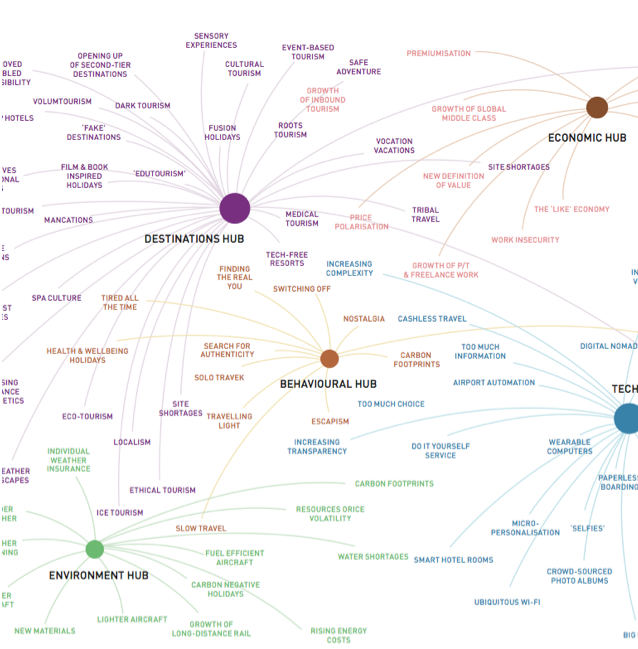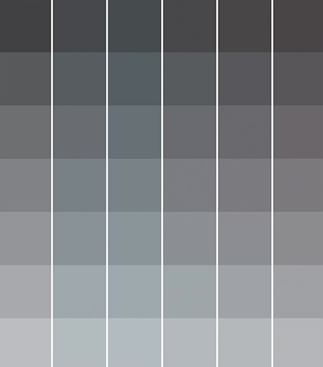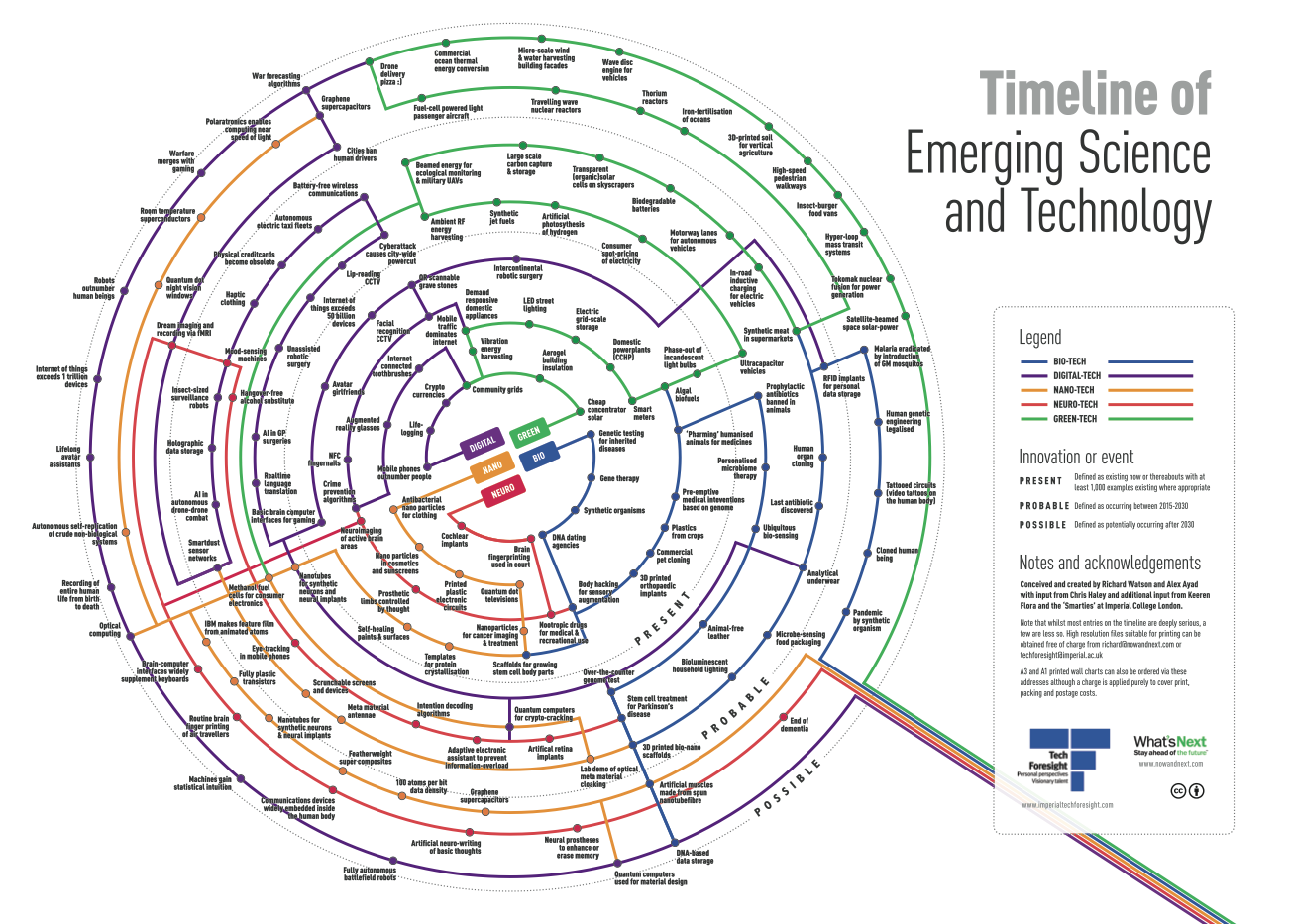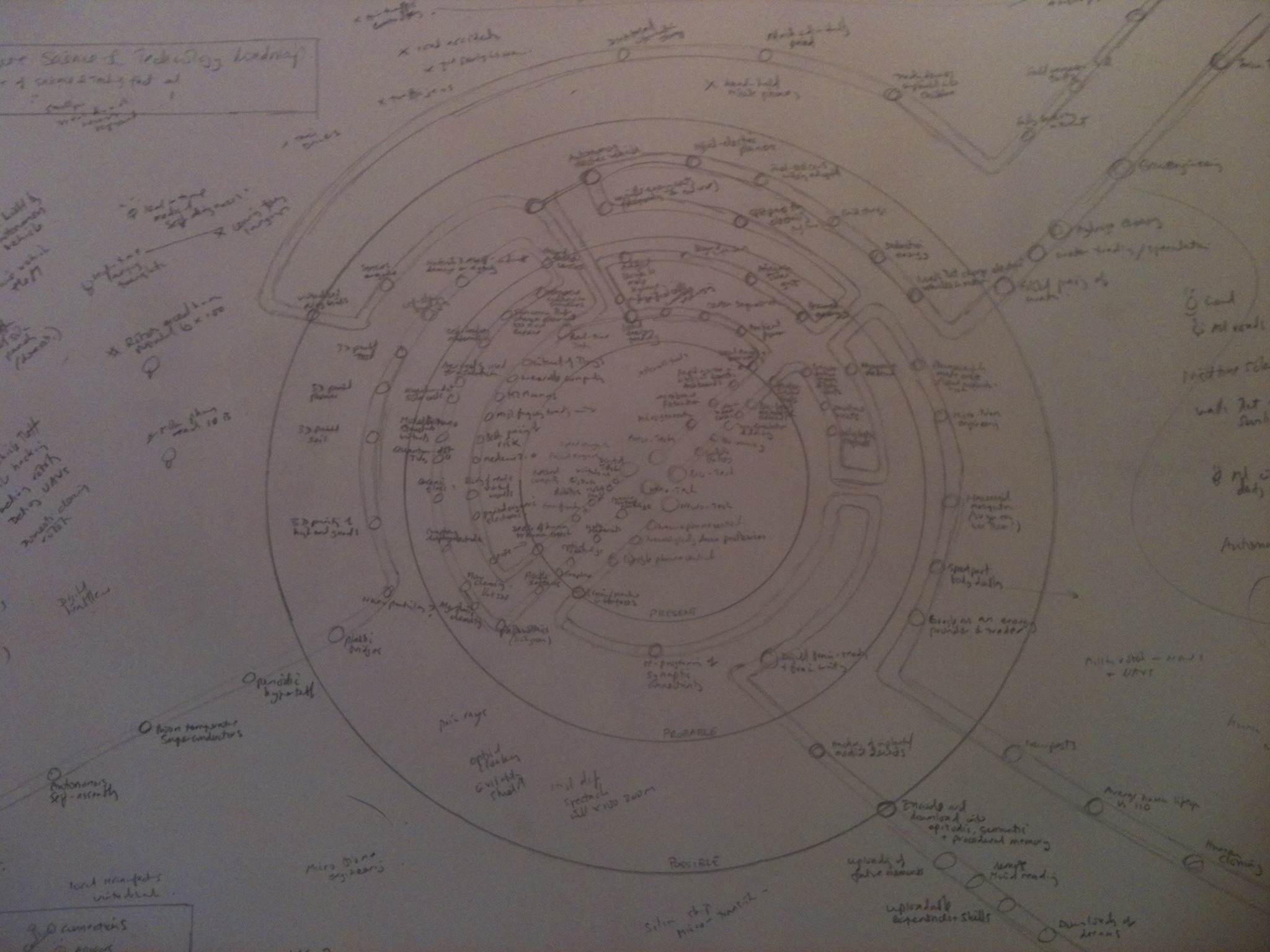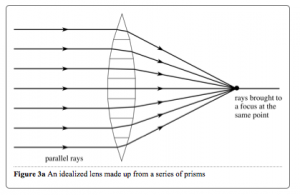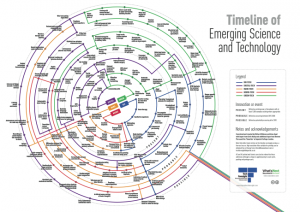Around 24,000 suicide attempts are made in the UK every year by 10-19 year-olds.
Monthly Archives: July 2014
New issue of What’s Next
iPotty
“Hell is other people” (Jean-Paul Sartre)
I was going to save this for my Web Sight (sic) of the month in my brainmail newsletter, but it’s just too (LOL) good to wait. Sent in by Matt Doyle in Robertson, Australia. I think we can all assume this will feature in my next book too. Link here. Explanation below.
“Sometimes, everybody needs a break from everybody. Enter Avoid Humans—a web-based app that combs data from Foursquare and Instagram check-ins, giving you the nearest places in your area with the least amount of humans. The app is divided into four categories-nightlife, food, coffee and refuge—and each location is color coded to indicate the current level of human presence.”
The Future of Holidays
If you’re lying on a beach, or around a pool, in the northern hemisphere, here’s some holiday reading – a report on the future of holidays and travel. Click on this link.
Why is Grey the New Black?
Have you noticed the grey? Not just 50 Shades (the top selling book of the decade we’re told), but in car parks, on Pinterest, in Elle Decoration and on the catwalk. There is a theory (which we probably shouldn’t take very seriously) that major fashion trends only become obvious at the halfway point of each decade, so now might be a good time to make a call. Sales of grey t-shirts have risen hugely recently. So have sales of grey and silver cars.
So what’s the story? According to Oriole Cullen, a senior curator at the Victoria and Albert Museum in London, grey was historically associated with half-mourning. In other words, if a family member died you traditionally wore black, but if someone more removed died the colour of choice was grey. So are we in some kind of collective mourning? Are we mourning the loss of something back in the day? (a phrase, like grey, that seems to have popped up out of nowhere recently). No, that’s not it. In fashion terms grey sits well with other colours. It’s also an ideal colour to showcase expensive fabrics. But ignore all this.
My view is that the most likely explanation for the rise of grey and silver tones is rampant anxiety. Silver cocoons you, either as paint on the wall, on a computer, as clothing or as a car exterior colour. Crucially, silver subconsciously represents armour and is protection against rapid change and deep uncertainty. Grey, similarly, represents solidity in the form of stone and stands for stability. Or, of course, it could all just be the whims of the facile fashion industry.
新兴科技时间轴(2014——2030+)
这是和帝国理工大学技术预测同行们(尤其是阿莱克斯·阿亚德(Alex Ayad),但是在后期也要特别感谢克里斯·哈利(Chris Haley))共同创作的新型科学和技术时间轴。上面是图表完工时的图片。我们对于是否把“移动电话数量超过人口”列为“当下”讨论了很久,但是电话用户超过69亿人,已经很接近人口总数了。
请点击本段最后的链接,下载适合打印的高分辨率PDF版本(建议用彩色A3或更大纸张打印)。在一周左右时间内,将会有图表的纸质打印版。在本博文底部是一些展示该图表是如何创建的图片,以及图表是如何演进的。新兴科技-5
至于图表上有什么,有5个关键大技术:数字技术(主要是信息技术)、生物技术、纳米技术、神经技术和绿色技术(有时被称为清洁技术)。
我们把图表分成3个时间区域。第一个区域是“当下”,我们定义为现在或附近(2014-2015),同时至少1000个实际例子(事件可能是一次性出现的事,但是创新一般至少要有1000个实际例子才会纳入表中)。“很有可能”是第二个区域,被定义为2015-2030。第三个区域是“有可能”,被定义为从2030年往后可能出现的事。图表的绝大部分都是严肃的,但是我们没能抗拒在一些区域娱乐一下的冲动
希望你们都喜欢它,如果你觉得它有意思或者有用的话,请和他人分享。请注意本时间轴的出版是基于知识共享许可的,所以你可以在未询问情况下将其用于商业目的或者制作不同版本。但是如果使用时能链接回我们的初始版本,我们将感激不尽。
至于每条线上有什么,这里是清单:
绿色技术 当下
廉价太阳能聚集器
绝缘气凝胶建筑
振动能量采集
社区电网
能回应指令的家用电器
LED路灯
电网规模贮存
家庭电厂(冷热电联供系统)
智能仪表
藻类生质燃料
绿色技术 很有可能
超级电容车
消费者即时定价
100%淘汰白炽灯
氢的人工光合作用
合成飞机燃料
周围的射频能量采集
束能量用于生态监测和军事无人机
大规模的碳捕捉和碳贮存
摩天大楼上的透明(有机)太阳能电池
生物可降解电池
自主车辆专用车道
电动车辆路上感应充电
超市合成肉
绿色技术 有可能
行波反应堆
燃料电池驱动的轻型客机
无人机运送比萨
商业海洋热能转换
微型风能水能收集建筑外墙
汽车波转子发动机
钍反应堆
给海洋施以铁质肥料
用3D打印技术生产的适用于垂直农业的土壤
高速人行道
昆虫汉堡食物车
超回路大众运输系统
用托卡马克核聚变发电
卫星束太空太阳能
生物技术 当下
DNA时间确认机构
基因疗法
合成有机物
对于先天性疾病进行基因测试
入侵身体以增强感官
用3D打印技术生产的骨科植入物
商业宠物克隆
源于作物的朔料
基于基因的主动医学介入
为制药培育人源化的动物
生物技术 很有可能
预防性抗生素禁止用于动物
个性化的微生物疗法
无处不在的生物感应
非源于动物的皮革
非处方基因测试
对帕金森氏综合征进行干细胞治疗
用3D打印技术生产的生物纳米支架
人类器官克隆
为个人数据存储嵌入射频识别技术
发现最后的抗生素
生物技术 有可能
用纳米纤维制造人造肌肉
基于DNA的数据贮存
微生物感应的食品包装
引入转基因蚊子以消除疟疾
人类基因工程合法化
纹身电路(人体上的视频纹身)
克隆人类
合成有机物所带来流行病
数字技术 当下
移动电话数量超过人口 (情况转变则不属于这一类?)
生活记录
加密货币
连接到网络的牙刷
现实增强眼镜
预防犯罪算法
NFC指甲
可扫描条码的墓碑
能面部识别的中央摄像头
阿凡达女友
用于游戏的大脑-计算机基本界面
跨洲机器人手术
数字技术 很有可能
实时语言翻译
量子计算机用于解密
分析内衣
AI用于全科医生手术
无辅助机器人手术
物联网超过500亿个设备
能读唇语的中央摄像头
网络攻击导致整个城市范围内断电
不用电池的无线沟通
自主电子出租车车队
实体信用卡过时
触觉学衣服
情绪感知器
昆虫大小的侦查机器人
全息数据存储
AI用于无人机-无人机战斗
太阳耀斑消除GPS网络
数字技术 可能
侵入已经植入的神经设备
城市禁止人类驾驶员
预测战争的算法
商业飞机由智能手机劫持
战事与游戏合并
机器人数量超过人类
物联网超过1万亿个设备
终身阿凡达助手
记录人类从出生到死亡整个生命
家用冰箱感知保质期
完全自主的战场机器人
量子电脑用于材料设计
纳米技术 当下
用于衣物的抗病毒纳米粒子
化妆品和遮光剂中的纳米粒子
朔料打印的电子电路
量子点电视
癌症成像和治疗的纳米粒子
用于培育人体部位干细胞的支架
蛋白质结晶的模板
自我修复的漆点和表面
用于合成神经元和合成神经植入物的纳米管
消费者电子产品中的甲醇燃料电池
纳米技术 很有可能
人工电磁材料天线
可碾压的屏幕和设备
纳米技术 可能
实验室演示人工电磁材料隐身
旋光仪使计算接近光速
室温超导体
量子点夜视窗
自主数据密集
生态系统单层石墨超级电容自我复制
IBM用动画原子做成动画片
全朔料的晶体管
下一代超轻型合成材料
每比特数据有100个原子密集
神经技术 当下
耳蜗植入
大脑指纹用于法庭
益智药用于医学或休闲使用
由思维控制的假肢
活跃大脑区域的神经成像
神经技术 很有可能
思维控制的轮椅
手机对眼球移动追踪
解码意向的算法
适应性电子助手避免信息超负荷
人工视网膜植入
不会宿醉的酒精替代品
神经技术 可能
侵入植入的神经设备
大脑-电脑界面广泛补充了键盘使用
空中旅行者大脑指纹常规
通过fMRI对梦成像和记录
沟通设备广泛嵌入到人体
基本想法的人工神经编写
用大脑假体提升或消除记忆
终结痴呆
设计开发
设计大体上基于我之前2010年后趋势和技术时间轴做的 (需要PDF版本请点击这里)。第一个草图是在厨房桌子上用铅笔在A3白纸上画的,之后不断改进了好多版(记得大约是十二版)。圆圈最初是用厨房盘子和大碗画的,彩色的线最初是用荧光笔和我孩子们的马克笔混合创作的。专业设计之前的最终版本画在了A3绘图纸上,使各要点契合并连接好。设计的功劳也属于劳伦斯·怀特利(Lawrence Whitely),特别感谢帝国理工大学的科林(Kereen)。
关于未来的更新,我们已经在考虑动画版以及积极和消极版本(乌托邦版和非乌托邦版)。如果关于图表的未来更新版本,您觉得哪些事该/不该出现在图表上(或是看到一些愚蠢的错误,请务必告之我们)。
A container for water made from water?
I received this via email a while ago from Thomas Frey in the US. My instant reaction was that it was nuts and the email ended up being deleted. But then I had second thoughts and removed the email from the rubbish bin. Perhaps the idea isn’t so crazy after all. And what was it that Einstein said about crazy ideas? “If it doesn’t sound absurd then there’s no hope for it.” Something like that. So take off your cynical spectacles and read on….
“Last week I got into a discussion with a friend about the concept of self-contained water. If you think in terms of picking up a bottle of water, only without the bottle, you get the picture.
Rocks are self-contained, baseballs are self-contained, so why can’t we devise some way to make water self-contained? Yes, we have ice, but I’m referring to a more usable form of water. As an example, if water itself could be used to form a somewhat hardened skin around a small quantity of water, we could create 100% consumable water with zero waste.
An industrial design team in London has come the closest with something called “Ooho,” a blob-like water container made out of an edible algae membrane. While it still involves using something other than water, it does give us clues on how to make a container out of what we’re trying to contain, in this case water.
As we imagine our way through this design problem, many more questions come to light. Should it be flexible like a plastic bag or a bit more ridged like a typical water bottle? What is the ideal shape? Should it be a cube for easy stacking, have a handle for easy holding, or spherical just because it looks cool?
Even a container made of water will get dirty, so how do we clean the dirt from the side of a solid water container? More water?More importantly, what is the optimal size for a self-contained water container? Should it be cup sized, quart-sized, gallon-sized, or larger? Or maybe marble-sized or pea-sized water pellets would work best.
Should the water be “eaten” like tiny liquid snacks that could be popped into your mouth at any time? Perhaps we would want flavored water like cherry water, tea water, coffee water, or chocolate water. Maybe we don’t actually eat or drink the container. Once the inside water is gone, it may be possible to just discard the bottle onto a lawn or flowerbed, as a form of enviro-littering, and wait for it to re-liquefy, sending a few drops of moisture to the thirsty plants below.
How would we fabricate the container part of water? Would it somehow be molded, pressed, 3D printed, or simply sprayed onto a form.”
Ways of seeing (which I didn’t see)
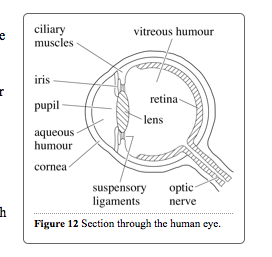 Someone at the Imperial Tech Forecast event last Friday said that the new emerging tech map reminded them of an eyeball and an optic nerve. My lines (bottom right of third diagram) were merely making the point that the five key forces, or disciplines, are to some extent merging. Thinking about though, the optics thought is a good one. Bringing elements into focus, new ways of seeing, inversion of data (images) and all that.
Someone at the Imperial Tech Forecast event last Friday said that the new emerging tech map reminded them of an eyeball and an optic nerve. My lines (bottom right of third diagram) were merely making the point that the five key forces, or disciplines, are to some extent merging. Thinking about though, the optics thought is a good one. Bringing elements into focus, new ways of seeing, inversion of data (images) and all that.


